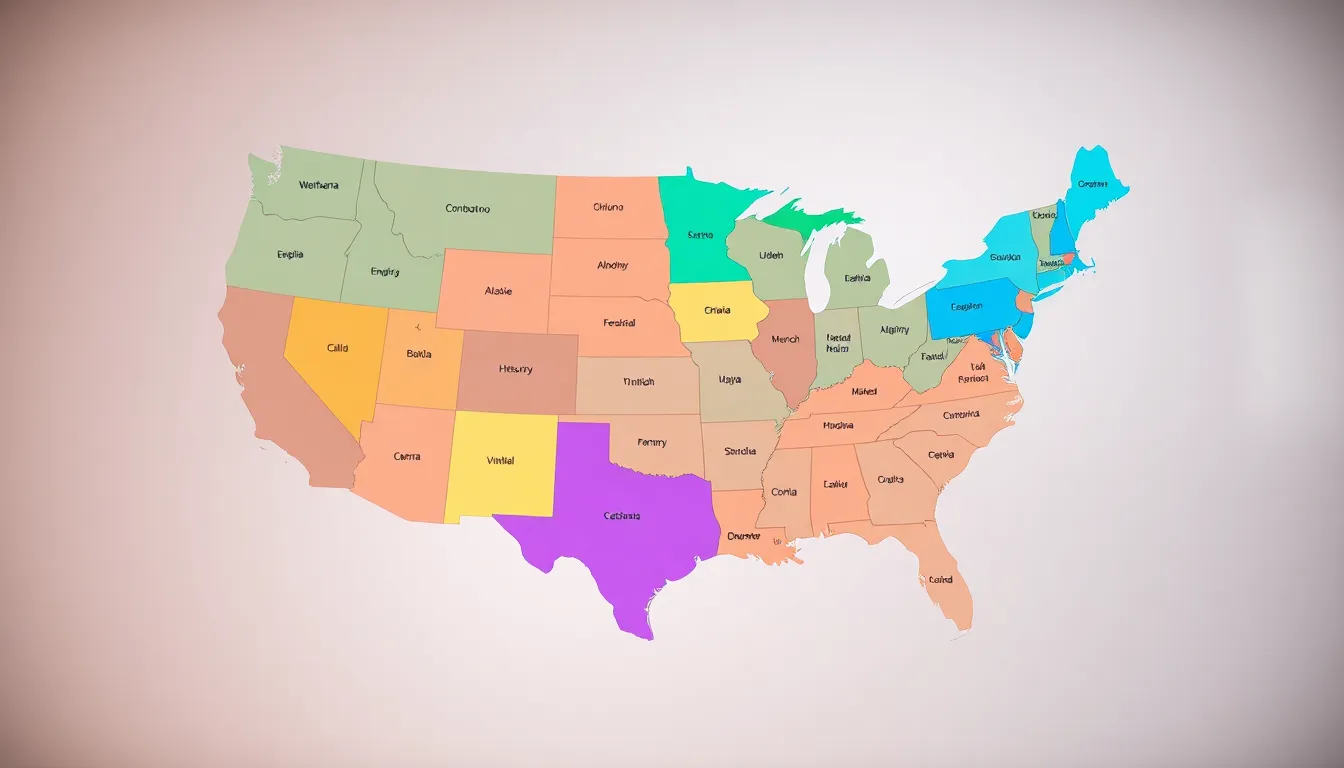Table of Contents
ToggleIn today’s fast-paced digital world, the adage “a picture is worth a thousand words” has never been truer, especially when it comes to political world maps. Imagine navigating the complex realm of geopolitics without a decent map. It would be like trying to find a needle in a haystack, blindfolded. This article explores high-resolution political maps, revealing their importance and features, while having a bit of fun along the way. Buckle up: we’re about to embark on a colorful journey across borders and boundaries.
Understanding Political World Maps

Political world maps serve as visual tools, representing countries, regions, and territories, each marked distinctly to convey essential geopolitical information. Unlike physical maps, which emphasize terrain features, political maps focus on divisions drawn by governance backgrounds. These maps highlight boundaries, capital cities, and major geographical landmarks, making them indispensable for anyone looking to understand global politics. Think of it this way: they’re like the Instagram story of countries, showcasing them in all their social intricacies.
Maps often come in various styles, from colorful political posters to sleek digital formats, catering to diverse needs. The best way to appreciate these maps is to see them as more than just artistic representations: they embody the politics of the world. That’s right: they shout from the rooftops about who rules where and how power dynamics shift across the globe.
Importance of High-Resolution Maps
High-resolution maps make details pop in stunning clarity. They allow enthusiasts, researchers, and policymakers to scrutinize boundaries and identify resources, infrastructure, and population densities without straining their eyes. In a world where decisions are often made based on geographic data, having access to high-quality visuals can be a game-changer.
Also, accuracy is crucial in political mapping. High-resolution maps eliminate ambiguities that lower-resolution maps might present. For global discussions on territories, accommodating higher standards ensures everyone speaks the same language when it comes to geography. After all, who wants a mishap when determining where one country ends and another begins? Nobody, that’s who.
Features of High-Resolution Political Maps
High-resolution political maps come packed with valuable features. Not only do they highlight country borders, but they also emphasize regional characteristics, including capitals and major cities. Many of these maps incorporate vibrant colors to differentiate nations, while others employ varied textures and patterns to signify different political landscapes.
Also, many modern maps provide interactive features, allowing users to zoom in and out. Some even allow for real-time updates, adapting to changes in political climates, such as border shifts or newly recognized nations. For instance, imagine clicking on a country, and voila. You see its population size, GDP, and even a fun fact or two about its current leadership. Now that’s what you call mapping with flair.
Applications of High-Resolution Political Maps
The applications for high-resolution political maps are as varied as the countries they depict. For educators, these maps provide a striking way to teach geographical and historical contexts. In business, they enable companies to assess regional markets, strategize logistics, or even identify potential risks before expanding operations.
Government officials often use these maps for planning initiatives, tracking resource distribution, or during disaster management scenarios. Think of high-resolution maps as Swiss Army knives for geography nerds, they’re equipped to tackle a multitude of tasks.
Nonprofit organizations can also use these tools for advocacy, planning outreach efforts, and creating campaigns designed to serve specific geographical demographics better. So, whether you’re a student, businessperson, or humanitarian, high-resolution political maps have got something in store for you.
How to Access High-Resolution Political Maps
Finding high-resolution political maps has become easier with the rise of digital platforms. Many websites offer an impressive array of maps for download, some for free and others for purchase. Sites such as National Geographic and specialized GIS (Geographic Information System) platforms provide access to detailed political maps.
Plus, government websites often have section dedicated to cartographic resources that allow users to explore and download maps directly related to their interests. For those craving customization, crafting personalized maps through software applications is an option. Ever thought about making your own political map? It’s like creating your own Lego set, but infinitely more complex.
Future Trends in Political Mapping Technology
As technology evolves, so does the art of political mapping. The coming years are likely to witness advancements such as augmented reality (AR) integration, providing users with immersive mapping experiences. Imagine pointing your device at a certain region and instantly learning about its history, demographics, and current political climate.
Also, data visualization techniques are becoming more sophisticated. Inspiration from machine learning could help mapmakers analyze complex datasets, producing maps that can predict trends and political shifts based on historical patterns. This can be invaluable for policymakers and analysts alike, enabling them to anticipate changes before they occur. The future is indeed bright, and colorful, for political mapping.



